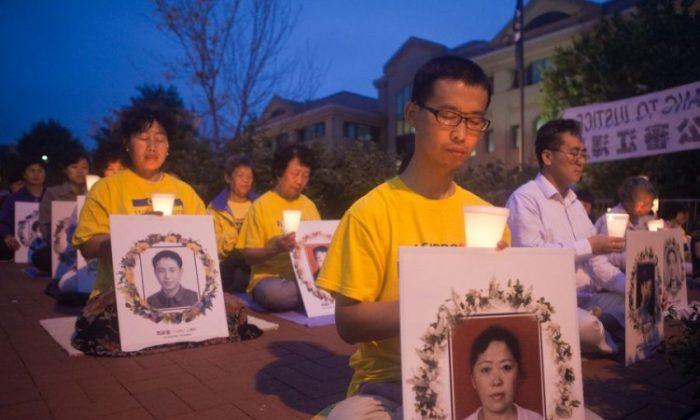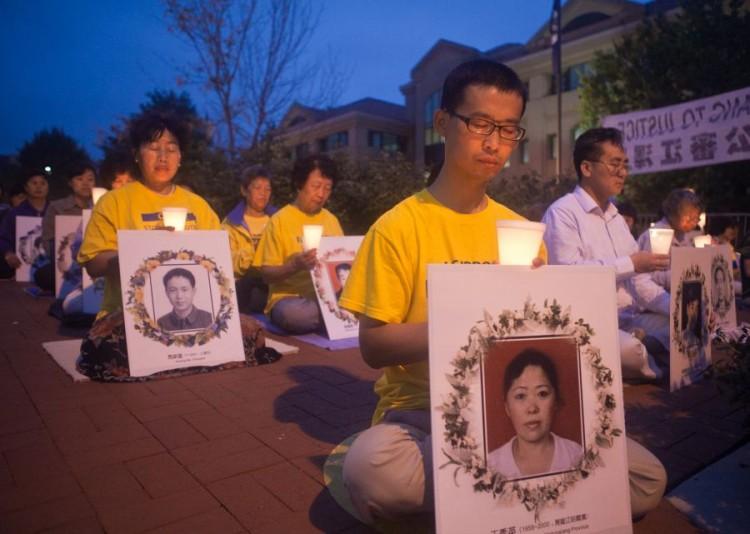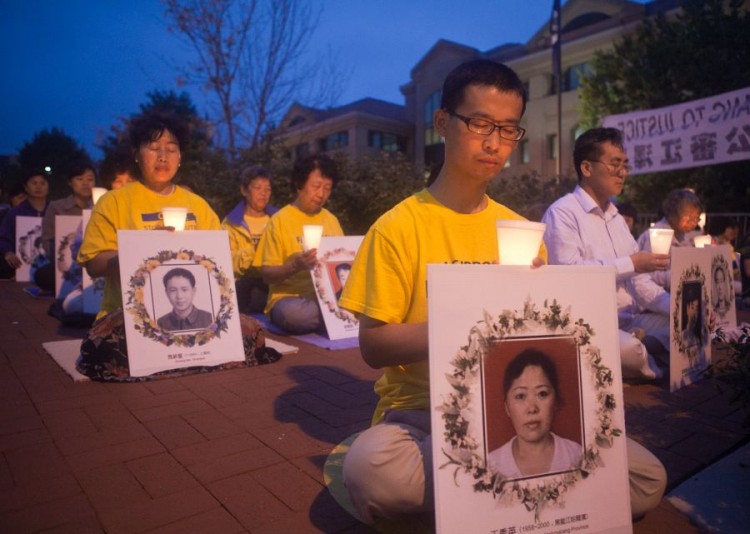WASHINGTON—It began to rain as practitioners of the spiritual discipline Falun Dafa, also known as Falun Gong, held candles in a vigil in front of the Chinese Embassy in Washington, D.C. on the evening of July 20, the 13th anniversary of the start of the Chinese Communist Party’s campaign of defamation and persecution against adherents of the practice. The D.C. practitioners gathered to memorialize their fellow practitioners in China that have been tortured and killed for their beliefs.
The people gathered across from the front entrance of the stone Embassy building held large banners that read, “ Bring Jiang to Justice” and “Falun Dafa is Great.” Prior to lighting the candles, Falun Dafa practitioners practiced Falun Gong’s slow moving standing exercises and sitting meditation.
“This is something[ that we are doing] because of our conscience, ” said Larry Liu, a representative of the Falun Dafa Association in Washington, D.C.. “We want to send a clear message to the Chinese government, especially given the current situation in China: the time is now to end the persecution. It is the time.”
According to Minghui, the official Falun Dafa website, Falun Dafa is an advanced self cultivation practice of the Buddha School founded by Mr. Li Hongzhi. The practitioners of Falun Gong seek to live according to the principles of truthfulness, compassion, and tolerance in their daily lives.
The Falun Dafa Information Center reports that in June 1999 Jiang Zemin, then the Chinese Communist Party leader, granted authority to an extralegal police task force to use “ every means possible” “to eradicate Falun Gong.” Jiang created the 6-10 office, a Party organ whose mission is to eliminate the practice
Documented forms of abuse include physical torture, psychiatric torture, rape and sexual assault, and arbitrary imprisonment and slavery.
Mr. Huang Weizhong wrote about one instance of the abuse suffered by Falun Gong practitioners in an article on the Minghui website: “My wife was arrested in early May 2002. They took more than 2,000 yuan (US$314; according to China’s National Bureau of Statistics, the average yearly income for an urban household is 21, 033 yuan, which is said to be 3.3 times the average household income for rural families) in cash from her and savagely beat her in the detention center.
“She was immobilized on the floor with her arms and legs spread out. Later on she was held in a forced labor camp for three years where she was beaten and force-fed and her arms were cross-cuffed behind her back. She was very weak by the time she returned home.”
Ms. Zhang eventually passed away. Mr. Huang, a former candy factory employee, was detained four times, sent to prison and held in forced labor camp, where he was also brutally tortured.
The Falun Dafa Information Center reports that over 3,400 people have been reported dead as result of various forms persecution.
The Minghui website describe four elements as providing the regime’s rationale for the persecution: Jiang Zemin’s apparent fear of Falun Gong’s growth and jealously of its popularity; the inherent conflict between Falun Dafa’s principles of truthfulness, compassion, and tolerance and the regime’s ideology; and the very nature of communism, which to sustain itself requires a struggle against a small segment of society periodically labeled as a class enemy.
The Epoch Times publishes in 35 countries and in 19 languages. Subscribe to our e-newsletter.




